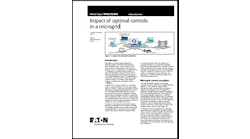Unlocking Microgrid Potential: The Role of Solar Thermal
Written By: Josh Faris ELM MicroGrid | ELM Solar Sales Engineer
As cities and industries strive to meet ambitious carbon reduction targets, microgrids have emerged as a pivotal tool in decentralizing energy generation, enhancing resilience, and reducing emissions. These local energy networks enable communities to generate, store, and manage energy, providing independence from the larger grid. One often overlooked yet critical component for enhancing the efficiency and sustainability of microgrids is the use of solar thermal technology, specifically for heat decarbonization.
The Decarbonization Challenge
New York City (NYC) stands at the forefront of progressive climate action, aiming to cut its greenhouse gas emissions by 80% by 2050, as outlined in its OneNYC plan. While electrification of buildings is a major pillar of this strategy, heating remains one of the most significant sources of emissions. Heating buildings traditionally relies on fossil fuels like natural gas and oil, which contributes significantly to carbon output. While electric heat pumps offer one path toward decarbonization, they come with challenges such as high electricity consumption, higher costs, and the need for frequent replacements due to extended run times.
Why Solar Thermal?
Solar thermal technology provides an ideal complement to microgrids because it generates heat directly from the sun’s energy rather than converting it into electricity first. This eliminates the inefficiencies inherent in electric heating systems, which must rely on grid power or local renewable energy systems like solar PV. Solar thermal systems are particularly well-suited to microgrids because they can meet heat demand with little or no additional strain on electrical infrastructure, offering an energy-efficient, scalable solution.
Introducing ELM Solar’s Virtu HOT Collectors
One innovative solution making waves in the solar thermal space is Naked Energy’s Virtu HOT Collector distributed by ELM Solar. Unlike traditional flat plate collectors, Virtu HOT utilizes evacuated tube technology, which maximizes heat capture even in colder climates like New York City. The compact nature of the tubes allows the system to be installed in areas where roof space is limited—a significant advantage in densely packed urban environments.
NYSERDA’s Heat Recovery Program
Recently, ELM’s Virtu HOT Collector has been recognized by the New York State Energy Research and Development Authority (NYSERDA) and included in its Heat Recovery Program. This program is designed to support innovative technologies that help decarbonize heat in the state, particularly in urban environments like NYC where the electrification of heat faces limitations due to the city’s constrained grid and the scarcity of suitable roof space for large-scale solar PV arrays.
In areas where space is at a premium, such as rooftops of commercial or multi-family buildings, solar thermal collectors offer an advantage over traditional photovoltaic systems. Virtu HOT collectors, with their vertical or wall-mounted installation flexibility, can be integrated into facades or narrow spaces, preserving valuable roof real estate for other energy generation needs. Their energy density also makes them ideal for addressing New York City’s heat decarbonization challenges.
The Role of Solar Thermal in NYC Microgrids
The integration of solar thermal technologies like the Virtu HOT collector into microgrid designs is a powerful move for heat decarbonization, especially in cities like New York. Not only can this technology help meet aggressive local mandates, such as those outlined in Local Law 97, which requires buildings to significantly reduce their carbon emissions, but it can also reduce the strain on the grid by limiting the electrical demand for heating.
Microgrids designed with solar thermal in mind offer a more balanced energy system, drawing on renewable heat sources to meet domestic hot water needs, space heating, and even industrial process heat. By incorporating solar thermal, these microgrids ensure that heat demand is met sustainably, reducing reliance on the electric grid, and lowering overall energy costs.
The Virtu HOT by Naked Energy Advantage for Heat Decarbonization
Virtu HOT collectors are particularly well-suited for integration into NYC microgrids due to their high efficiency and adaptability. They produce up to three times the energy per square meter compared to traditional PV systems when it comes to thermal energy production, making them ideal for areas where space is limited. Furthermore, by preheating water, they can significantly reduce the workload and runtime of electric heat pumps, which not only lowers energy consumption but also prolongs the lifespan of the pumps.
For many buildings in New York, integrating a solar thermal system like Virtu HOT could eliminate the need for expensive electrical service upgrades, which can take years to complete. In areas where grid capacity is already constrained, this is a significant benefit, allowing buildings to decarbonize more rapidly without waiting for major infrastructure upgrades.
Conclusion: A Path Forward for Heat Decarbonization
As NYC works to meet its carbon reduction goals, the integration of solar thermal technology into microgrids presents a critical opportunity for reducing emissions while enhancing energy resilience. With systems like ELM Solar’s Virtu HOT by Naked Energy collectors now available through programs like NYSERDA’s Heat Recovery Program, the path to decarbonizing heat in urban environments is becoming clearer.
By leveraging the unique advantages of solar thermal technology, particularly in areas with limited roof space, NYC can accelerate its journey toward a more sustainable future. As microgrids become increasingly central to energy planning, ensuring that they are equipped with solar thermal solutions will be vital in meeting the growing demand for renewable heat.
Sponsored By:








